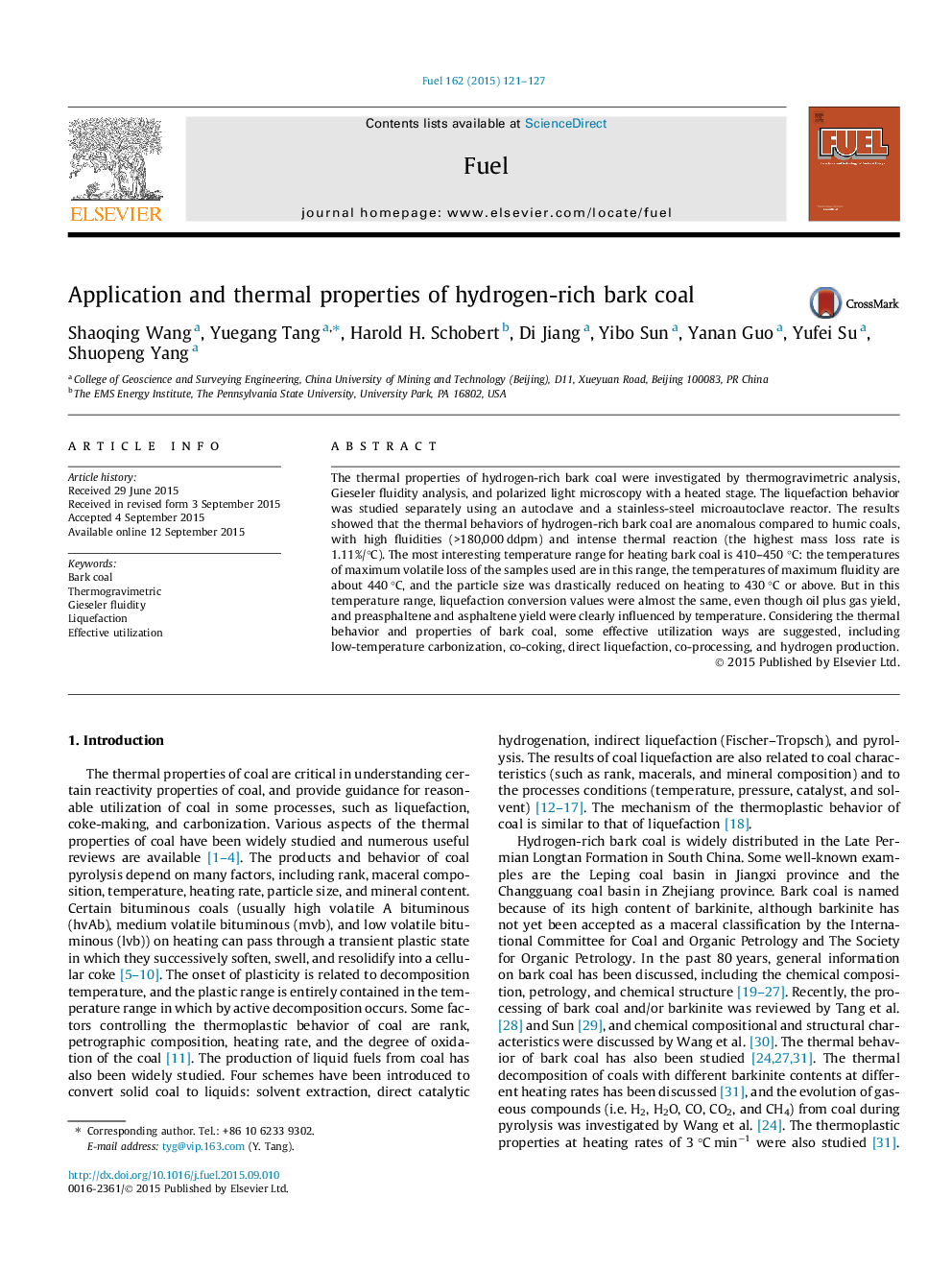| Article ID | Journal | Published Year | Pages | File Type |
|---|---|---|---|---|
| 6634440 | Fuel | 2015 | 7 Pages |
Abstract
The thermal properties of hydrogen-rich bark coal were investigated by thermogravimetric analysis, Gieseler fluidity analysis, and polarized light microscopy with a heated stage. The liquefaction behavior was studied separately using an autoclave and a stainless-steel microautoclave reactor. The results showed that the thermal behaviors of hydrogen-rich bark coal are anomalous compared to humic coals, with high fluidities (>180,000 ddpm) and intense thermal reaction (the highest mass loss rate is 1.11%/°C). The most interesting temperature range for heating bark coal is 410-450 °C: the temperatures of maximum volatile loss of the samples used are in this range, the temperatures of maximum fluidity are about 440 °C, and the particle size was drastically reduced on heating to 430 °C or above. But in this temperature range, liquefaction conversion values were almost the same, even though oil plus gas yield, and preasphaltene and asphaltene yield were clearly influenced by temperature. Considering the thermal behavior and properties of bark coal, some effective utilization ways are suggested, including low-temperature carbonization, co-coking, direct liquefaction, co-processing, and hydrogen production.
Related Topics
Physical Sciences and Engineering
Chemical Engineering
Chemical Engineering (General)
Authors
Shaoqing Wang, Yuegang Tang, Harold H. Schobert, Di Jiang, Yibo Sun, Yanan Guo, Yufei Su, Shuopeng Yang,
